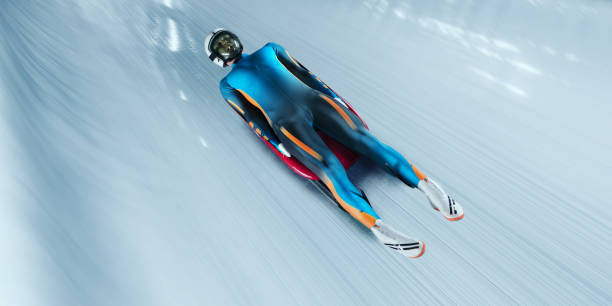General Rules of Trugo Sport
As you step onto the trugo court, imagine the strategic moves and precise actions that await you in this unique sport. Understanding the general rules of Trugo is essential to excel in the game.
From the equipment required to the player positions and roles, each aspect plays a crucial part in the gameplay. Curious to uncover the intricacies that govern this lesser-known sport?
Let's explore how these rules shape the dynamics of Trugo and pave the way for an engaging and competitive experience on the court.
History of Trugo
Trugo, a unique sport originating in Australia, has a fascinating history that traces back to the early 20th century. The origins of Trugo can be linked to railway workers in the state of Victoria who sought a way to pass the time during breaks. It evolved as a blend of traditional games like croquet and lawn bowls, with a distinct Australian twist. Over time, Trugo spread beyond railway yards, becoming popular in local communities and evolving into a competitive sport.
The evolution of Trugo saw the game formalized with specific rules and equipment. What started as a pastime for railway workers transformed into a structured sport played in clubs and tournaments. The early 20th century marked a turning point for Trugo, as its popularity surged, and formal leagues were established. The evolution continued as the game spread to other parts of Australia, captivating players with its unique blend of skill and strategy.
Understanding the origins and evolution of Trugo provides insight into its enduring appeal and cultural significance. As you delve into the history of Trugo, you uncover a sport that embodies the spirit of community and creativity. The journey from a simple pastime to a competitive sport mirrors the resilience and adaptability of those who play it. Trugo's evolution reflects the rich tapestry of Australian sports culture, making it a beloved and cherished game for many.
Equipment Required for Trugo
To fully engage in the sport of Trugo, players must ensure they've the appropriate equipment at their disposal. Trugo requires minimal equipment, making it accessible to a wide range of participants. The main pieces of equipment needed for Trugo are a mallet, a ring, and a goal.
The mallet used in Trugo is similar to a croquet mallet but with a rubber or plastic head to prevent damage to the playing surface. It's essential for striking the ring towards the goal. The ring, typically made of rubber, is the object that players aim to strike through the goal to score points. Goals in Trugo are usually made of wood or metal and are placed at either end of the playing surface.
When it comes to proper Trugo attire, participants should wear comfortable clothing and closed-toe shoes to ensure safety during gameplay. Avoiding loose clothing is recommended to prevent any interference while swinging the mallet. Additionally, wearing sun protection like hats and sunscreen is advisable when playing outdoors to prevent sunburn.
Objective of the Game
Understanding the objective of the game in Trugo is crucial for players to strategize and score points effectively. The main goal of Trugo is to hit a rubber ring, called a 'trolley,' through goal posts at the opposite end of the field. This may sound simple, but the strategy involved is what makes the game challenging and exciting.
To succeed in Trugo, players must have a deep understanding of strategy. It's not just about hitting the trolley aimlessly; it's about positioning yourself correctly, calculating the right amount of force, and anticipating your opponents' moves. Team communication is also key in Trugo. Players need to work together, communicate effectively, and coordinate their actions to outsmart the opposing team.
Developing a winning strategy in Trugo requires both individual skill and cohesive teamwork. Players must be able to adapt to different game situations, adjust their tactics on the fly, and make split-second decisions. Effective team communication ensures that everyone is on the same page and working towards a common goal.
In essence, Trugo isn't just a physical game; it's a mental challenge that requires strategic thinking and teamwork. By mastering the objective of the game and honing your understanding of strategy and team communication, you can elevate your Trugo skills and lead your team to victory.
Playing Field Dimensions
The dimensions of the playing field in Trugo are standardized to ensure fairness and consistency across different game settings. When setting up the Trugo field, consider the following:
- Field Layout: Trugo fields are rectangular in shape, similar to a bowling alley but shorter. The field is divided into sections for different aspects of the game, such as the hitting area and the goal area.
- Boundary Lines: Clear boundary lines mark the edges of the playing field to define the legal playing area. These lines help players determine the limits within which the game is played and ensure fair play.
- Goal Area: Within the field, there's a designated goal area where players aim to score points. This area is strategically placed to add challenge and excitement to the game.
Maintaining the correct dimensions and layout of the Trugo field is crucial for a competitive and enjoyable game. By adhering to the standardized field dimensions, players can focus on honing their skills and strategy without worrying about variations in playing conditions.
This consistency fosters a level playing field for all participants, enhancing the overall Trugo experience.
Scoring System in Trugo
In Trugo, players earn points based on their performance in specific game actions throughout each round. Understanding the scoring system is crucial to excel in this unique sport.
To score points in Trugo, players primarily aim to strike a rubber ring with a mallet to pass through goal posts at the opposite end of the court. This action is known as a 'Roof' and earns the team 6 points. Additionally, 'Posts' are scored when the ring hits the posts directly, giving the team 3 points. A 'Bar' is achieved when the ring hits the crossbar but doesn't pass through the goal posts, awarding the team 1 point.
To maximize scoring opportunities, players employ various scoring techniques and strategies. These include precise aiming, controlled mallet swings, and understanding the court layout to position themselves advantageously. Trugo tactics involve quick decision-making, communication with teammates, and adaptability to the opponent's defensive maneuvers.
Defensive maneuvers in Trugo focus on obstructing the opposing team's attempts to score, such as blocking shots and intercepting the ring mid-air.
Mastering the scoring system, utilizing effective techniques, and implementing strategic gameplay are essential components for success in Trugo. By honing these skills, players can elevate their performance and contribute significantly to their team's overall success.
Player Positions and Roles
Players in Trugo sport take on distinct positions and roles on the court to contribute strategically to their team's performance and success. Understanding the different player positions and roles is crucial for effective team dynamics and strategy in Trugo.
Here are some key points to consider:
- Team Dynamics: Each player's position in Trugo is vital for the overall team dynamics. Whether you're a forward, defender, or midfielder, your role impacts how the team functions on the court. Working together cohesively and understanding each other's roles can lead to a more successful gameplay.
- Strategy: Player positions in Trugo aren't just about where you stand on the court; they also dictate the strategies you employ during the game. As a player, you need to adapt your tactics based on your position to outsmart the opponents and secure victory for your team.
- Skill Development, Training Techniques: To excel in your specific position in Trugo, focusing on skill development and training techniques is essential. Whether it's honing your accuracy in shooting as a forward or improving your defensive skills as a defender, continuous practice and training are key to mastering your role on the court.
Fouls and Penalties
Understanding the rules of Trugo sport is essential when it comes to navigating the intricacies of fouls and penalties during gameplay. Common fouls in Trugo include stepping over the starting line before striking the ring or hitting the ring out of order. To avoid these infractions, players can strategize by staying mindful of their position and the sequence of play. By following these guidelines, players can minimize the risk of committing fouls and stay focused on the game.
When it comes to penalty enforcement, Trugo officials are responsible for ensuring fair play and upholding the rules of the game. Penalties are enforced to maintain the integrity of the match and discourage unfair tactics. Consequences for fouls can vary depending on the severity of the infraction. In some cases, a warning may be issued for minor fouls, while more serious violations could result in point deductions or disqualification.
Tips for Beginners
For newcomers to Trugo sport, mastering the basic techniques is key to building a strong foundation for gameplay. Trugo, a unique sport that combines elements of croquet and lawn bowls, requires precision and strategy. Here are some essential tips to help beginners get started:
- Focus on Basic Techniques: Spend time practicing fundamental techniques such as the correct way to swing the mallet, aim accurately, and control the strength of your shots. Building a solid foundation in these basic skills will set you up for success in more advanced gameplay.
- Avoid Common Mistakes: Keep an eye out for common mistakes like hitting the wrong ball, using excessive force, or misjudging angles. By being mindful of these errors, you can quickly improve your gameplay and avoid unnecessary penalties.
- Engage in Training Drills and Team Strategies: To enhance your skills and teamwork, participate in training drills that focus on specific aspects of the game, such as ball control or positioning. Additionally, work on developing effective team strategies to coordinate with your teammates and maximize your chances of scoring points.
Frequently Asked Questions
Are There Any Age Restrictions for Playing Trugo?
Imagine a garden welcoming all. Trugo, like the garden, has no age restrictions. It blooms with health benefits for all who tend to it. Embrace the game's inclusive nature and flourish in its joy.
Can Trugo Be Played Indoors or Is It Strictly an Outdoor Sport?
Indoor trugo offers the flexibility to play regardless of weather. While it provides a controlled environment, challenges like space limitations may arise. The benefits include consistent gameplay conditions and protection from outdoor elements.
Is There a Specific Dress Code or Uniform Required for Playing Trugo?
For playing trugo, there isn't a strict dress code or uniform. Comfortable activewear and closed-toe shoes are great choices. To enjoy the game, bring your enthusiasm and a mallet, as these are the main equipment requirements.
Are There Any Specific Strategies or Tactics That Experienced Players Use in Trugo?
In Trugo, experienced players rely on scoring techniques for success. Defensive strategies are crucial for stopping opponents. Effective team communication and player positioning enhance gameplay. These tactics elevate your performance and foster a winning mindset.
Are There Any Variations or Different Versions of Trugo That Players Can Try Out?
Explore the diverse world of trugo with its various formats and adaptations. Delve into modified versions that cater to different skill levels. Embrace the excitement of trying out new ways to enjoy the game.






